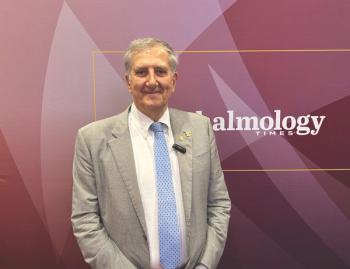
Cataract incision size is just right thanks to new technology
Incision sizes needed to remove cataracts have been significantly reduced by new technology, such as the vision enhancement system (Stellaris; Bausch & Lomb) which allows surgeons to make two 1.8 mm cuts on either side of the eye.
Incision sizes needed to remove cataracts have been significantly reduced by new technology, such as the vision enhancement system (Stellaris; Bausch & Lomb) which allows surgeons to make two 1.8 mm cuts on either side of the eye.
Now that the device has been used as part of clinical trials in a number of hospitals it is being sold to NHS trusts in the UK for £70,000 (around 92,000). The machine guides surgeons to make the right incisions, and the clouded lens is broken up using ultrasound before it is extracted. A new folded lens is injected into the space, where it is unfurled.
"It's a very quick and efficient procedure, it's painless, [with] no stitches, and [patients] can get up and walk out straight afterwards without the need for a patch and little danger of infection," said Sheraz Daya, MD, a consultant ophthalmologist at Queen Victoria Hospital, West Sussex, UK.
Other consultants agreed with Dr Daya's assessment, although they stressed that Stellaris was not the only device capable of reducing the incision to 1.8 mm. At least two other phaco systems (Sovereign; Advanced Medical Optics & Infiniti; Alcon Laboratories) are available.
"All these technologies are a move in the right direction," said Larry Benjamin, DO, an eye surgeon at Stoke Mandeville Hospital, Buckinghamshire, UK. "Smaller cuts are better, while the mechanism keeps the eye steady. The only problem is many of the lenses on the market aren't yet small enough to fit through this kind of incision, so one side of the technology has yet to catch up with the other."
Newsletter
Get the essential updates shaping the future of pharma manufacturing and compliance—subscribe today to Pharmaceutical Technology and never miss a breakthrough.





